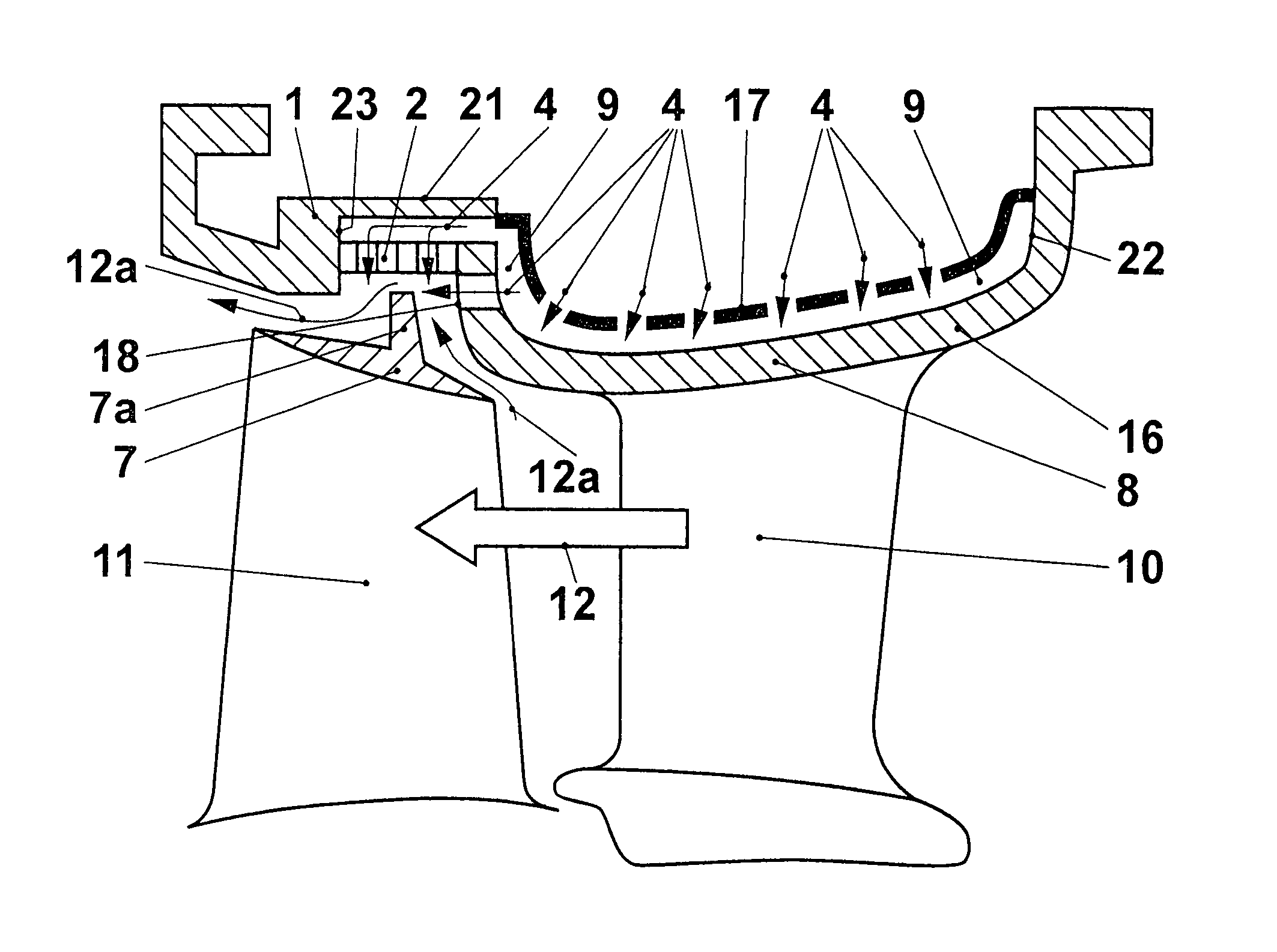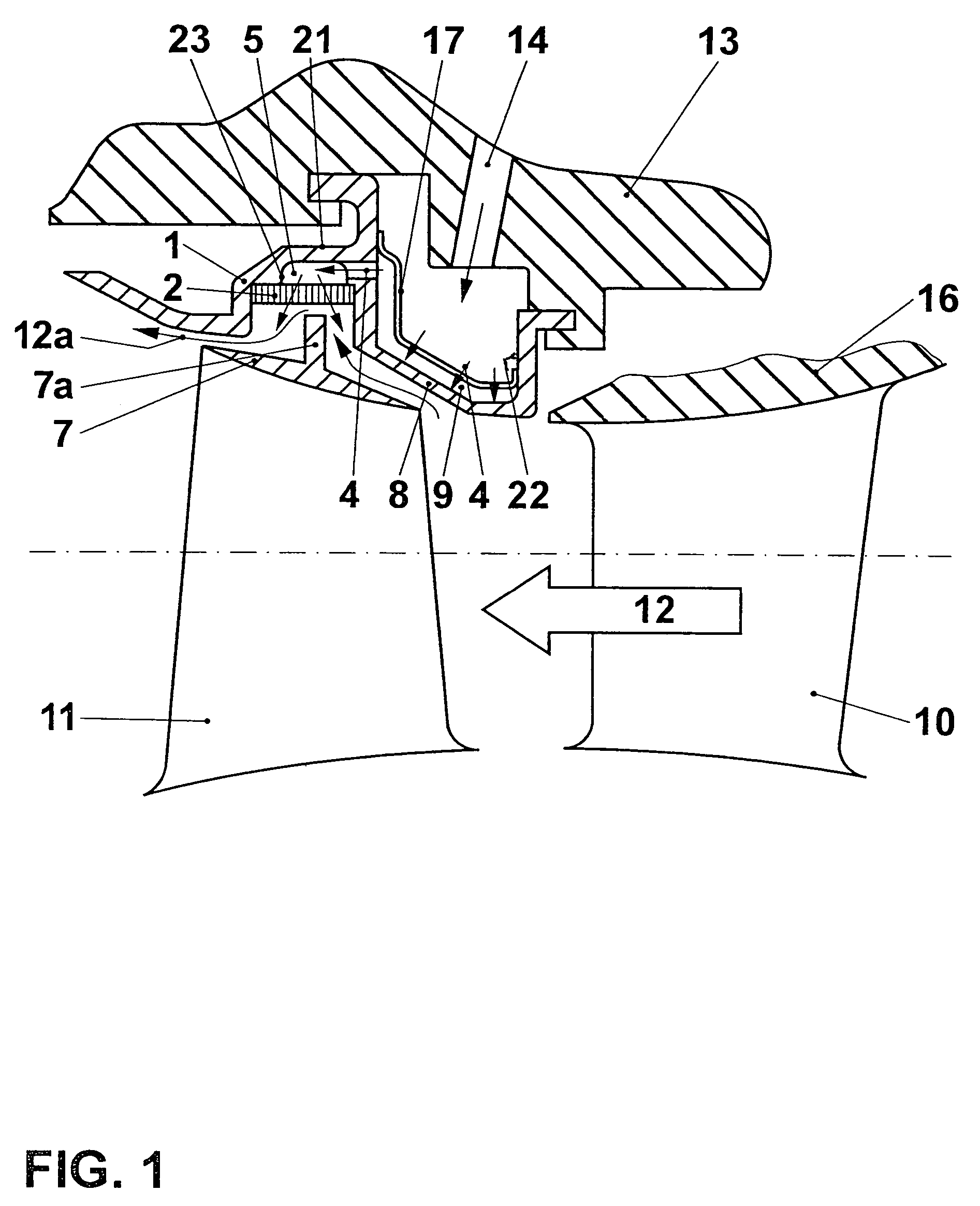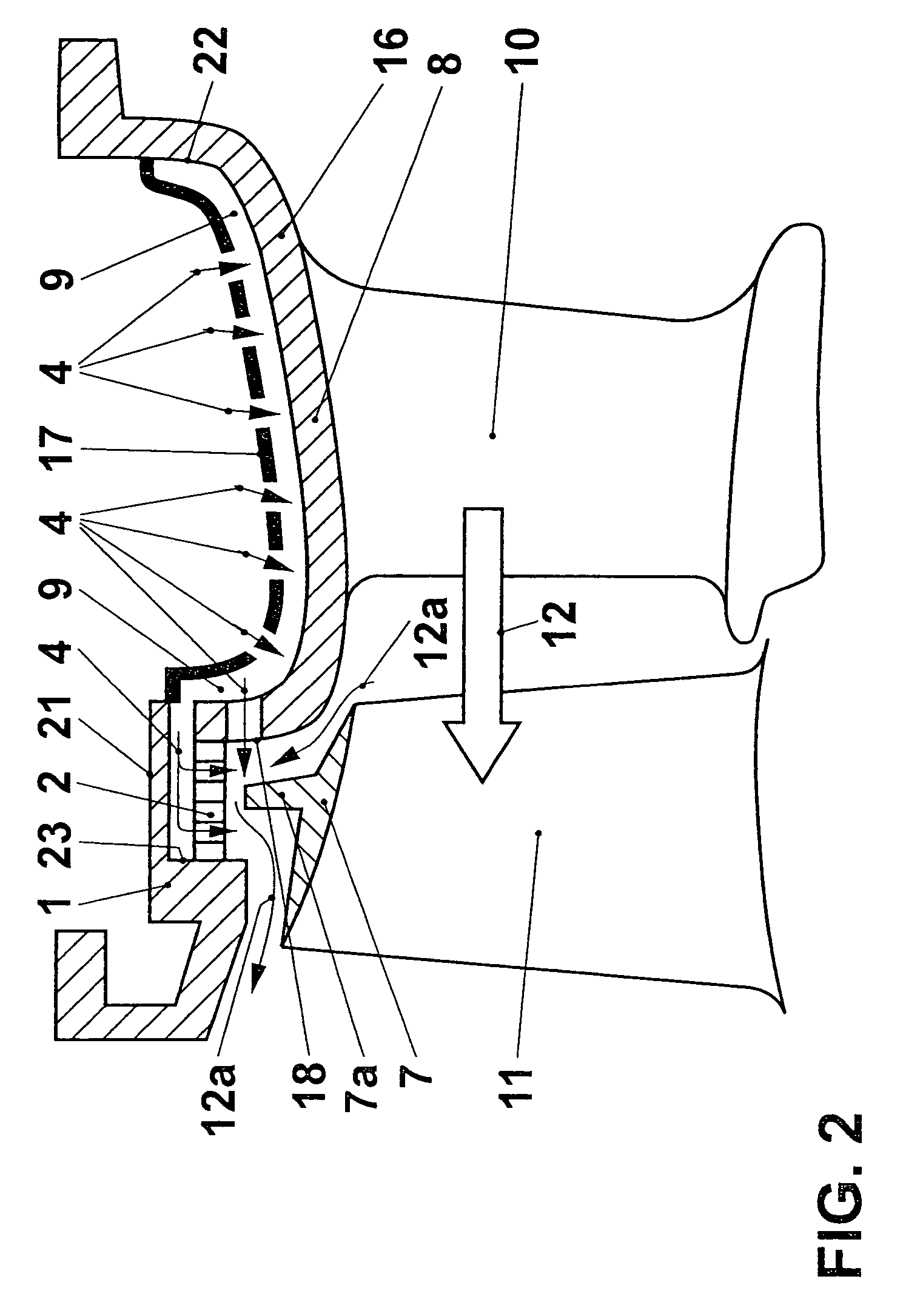Hot gas path assembly
a technology of hot gas path and assembly, which is applied in the direction of machines/engines, stators, liquid fuel engines, etc., can solve the problems of failure of the entire sealing arrangement, failure of cooling pressure, and no longer guaranteed
- Summary
- Abstract
- Description
- Claims
- Application Information
AI Technical Summary
Benefits of technology
Problems solved by technology
Method used
Image
Examples
Embodiment Construction
[0028]FIG. 1 shows a detail of a flow duct of a turbomachine, for example of a turbine of the gas turbo set. The hot gas flow 12 flows through the flow duct from right to left. A guide vane foot 16 with a guide vane 10 is arranged in the stator 13 in a way that is not illustrated and is not relevant to the invention, but is familiar to the person skilled in the art. A moving blade 11 with a cover band 7 and with cover band tips 7a is arranged downstream of the guide vane 10. The cover band tips, in conjunction with suitable stator elements 2 arranged opposite them, minimize the leakage gap and consequently the hot gas leakage flow 12a. Some of the leakage gap can be kept small under nominal conditions, the opposite element 2 is normally a comparatively soft brushing-tolerant element. This is designed in the present instance as a transpiration-cooled gas-permeable honeycomb element. The outflow for the coolant flowing through to flow out into the leakage gap in cross current to the l...
PUM
| Property | Measurement | Unit |
|---|---|---|
| distance | aaaaa | aaaaa |
| gas-permeable | aaaaa | aaaaa |
| gas-impermeable | aaaaa | aaaaa |
Abstract
Description
Claims
Application Information
 Login to View More
Login to View More - R&D
- Intellectual Property
- Life Sciences
- Materials
- Tech Scout
- Unparalleled Data Quality
- Higher Quality Content
- 60% Fewer Hallucinations
Browse by: Latest US Patents, China's latest patents, Technical Efficacy Thesaurus, Application Domain, Technology Topic, Popular Technical Reports.
© 2025 PatSnap. All rights reserved.Legal|Privacy policy|Modern Slavery Act Transparency Statement|Sitemap|About US| Contact US: help@patsnap.com



